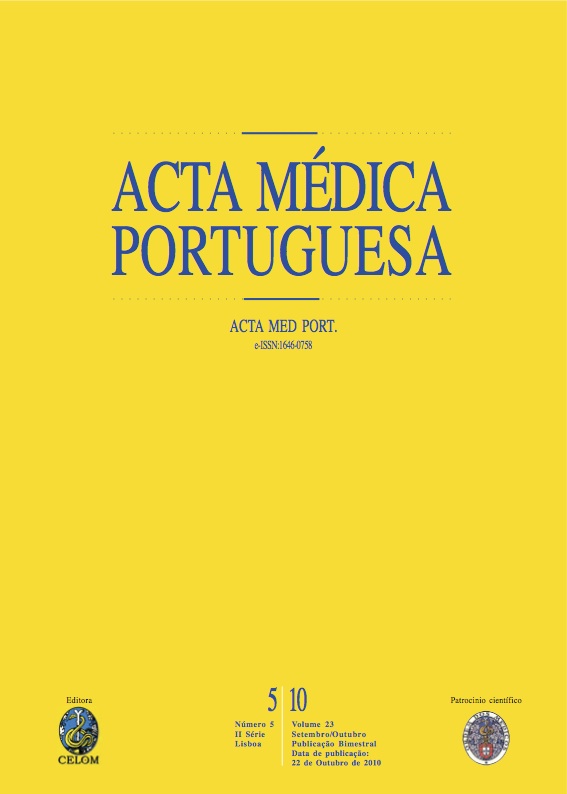Quality of care in diabetic outpatient clinics.
DOI:
https://doi.org/10.20344/amp.709Abstract
Type 2 Diabetes Mellitus affects an increasing number of people throughout the world. Several studies have shown that it is possible to prevent and minimize type 2 diabetes complications, be it treated appropriately over time. This study aimed to determine the quality of care provided to type 2 diabetic patients in our institution, through metabolic control and risk factors evaluation. Subjects and methods: We reviewed the medical records of 776 type 2 diabetic patients, followed at our outpatient clinic between 1998-2004. RESULTS: A total of 588 patients were included in the study, with a mean age of 66,8 ± 27,2 years. 58% were men. HbA1c levels averaged 7,2 ± 1,6. 57% had HbA1c = 7%. 25,3% met the target blood pressure of 130/80 mmHg; 48% met the goal LDL cholesterol level < 100 and 80% < 130 mg/dl. 6,8% of patients met the combined ADA goal for BP, LDL and HbA1c. Concerning therapeutic regimens: 71,5% used oral hypoglycaemic agents (OAD) alone (52,1% of these were using 2 or more agents); 28,5% were treated with insulin (16,2% in combination with OAD). 52,1% of the patients were anti-aggregated with aspirin. CONCLUSIONS: The metabolic control (HbA1c) and LDL values were favourable in our patients sample, comparing to other studies. The percentage of patients treated to the recommended BP of 130/80 mmHg is consistent with the literature. Only 6,8% of patients met the combined ADA goal for BP, LDL and HbA1c. Despite our comparable results to published data, we would like to highlight the difficulty to accomplish international recommendations to metabolic and risk factors control in clinical practice and the necessity of an aggressive approach to diabetes treatment.Downloads
Downloads
How to Cite
Issue
Section
License
All the articles published in the AMP are open access and comply with the requirements of funding agencies or academic institutions. The AMP is governed by the terms of the Creative Commons ‘Attribution – Non-Commercial Use - (CC-BY-NC)’ license, regarding the use by third parties.
It is the author’s responsibility to obtain approval for the reproduction of figures, tables, etc. from other publications.
Upon acceptance of an article for publication, the authors will be asked to complete the ICMJE “Copyright Liability and Copyright Sharing Statement “(http://www.actamedicaportuguesa.com/info/AMP-NormasPublicacao.pdf) and the “Declaration of Potential Conflicts of Interest” (http:// www.icmje.org/conflicts-of-interest). An e-mail will be sent to the corresponding author to acknowledge receipt of the manuscript.
After publication, the authors are authorised to make their articles available in repositories of their institutions of origin, as long as they always mention where they were published and according to the Creative Commons license.









